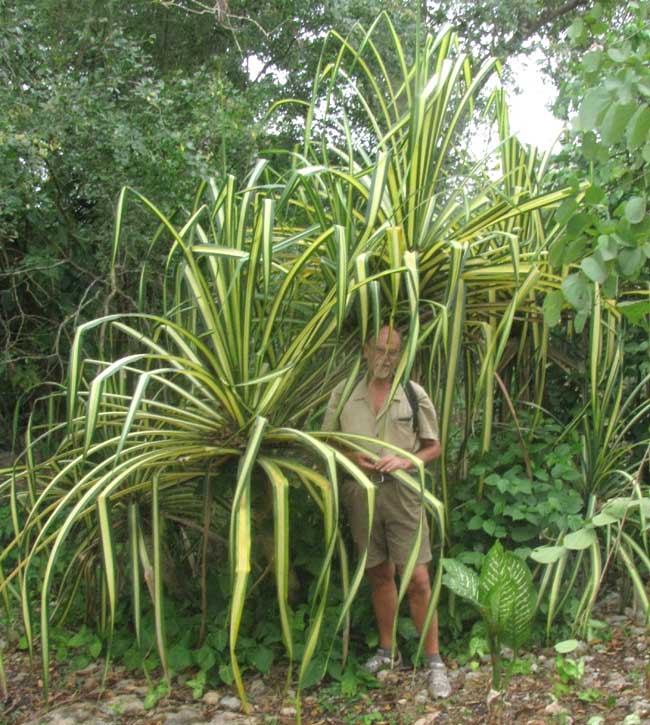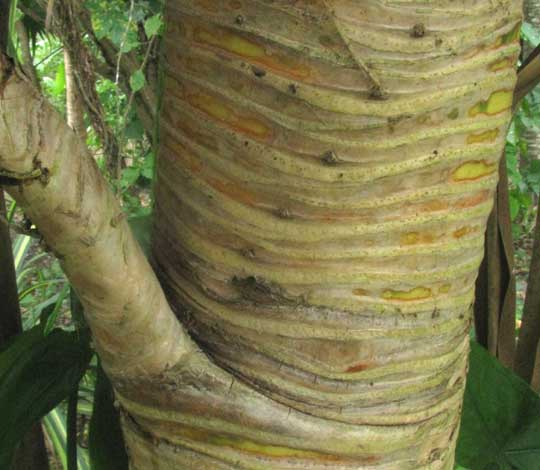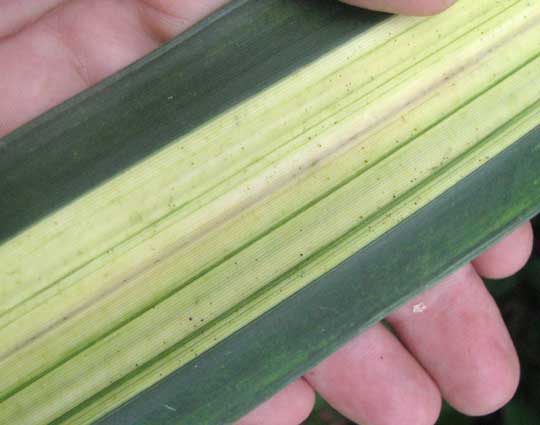Excerpts from Jim Conrad's
Naturalist Newsletter

from the March 11, 2012 Newsletter issued from Hacienda Chichen Resort beside Chichén Itzá Ruins; limestone bedrock; elevation ~39m (~128ft), N20.675°, W88.569°; central Yucatán state, MÉXICO
VARIEGATED SCREW PINE
Roaming in a forgotten corner of the Hacienda I came upon the 12-ft-tall (3.7m), variegated plant shown above. I'd seen this particular plant before but it had never been flowering or fruiting. I'd figured it was some kind of stemmed lily or amaryllis that more easily could be identified later when it flowered, but it never flowered, and I'd forgotten about it. However, this week when I saw it I recalled the big Pandanus "screw pine" we looked at last month, profiled at www.backyardnature.net/yucatan/pandanus.htm.
Now in this variegated plant I recognized certain screw pine features. For example, neither of the two species seems to flower here. Both species bore long, thin, stiff leaves, and both sprout their leaves from atop thick stems. Also, the stems of both species are heavily scored with narrow, close-together, horizontal leaf scars left by shed leaves. Our variegated plant's stem, with a branch arising on the left, is shown below:

However, the leaf margins of our February screw pine were armed with very tough, sharp spines, while blade margins on our current species bore none, as shown next:

Still, I suspected that we had yet another species of screw pine here, and a little Internet time confirmed it: Here we have what's often called the Variegated Screw Pine, PANDANUS SANDERI, originally from tropical Asia but now planted worldwide in the tropics.
As was the case with February's screw pine (Pandanus veitchii), our second discovery, P. sanderi, has nothing to do with pines and very little to do with screwing. Sometimes leaves arise from stems in a noticeably spiraling fashion, so that's the screwing they do. The pine part may arise from the roundish, bumpy fruits produced by Pandanus species, which are vaguely similar to pinecones.
Screw Pines belong to the Screw-Pine Family, the Pandanaceae, native to the Old World tropics.